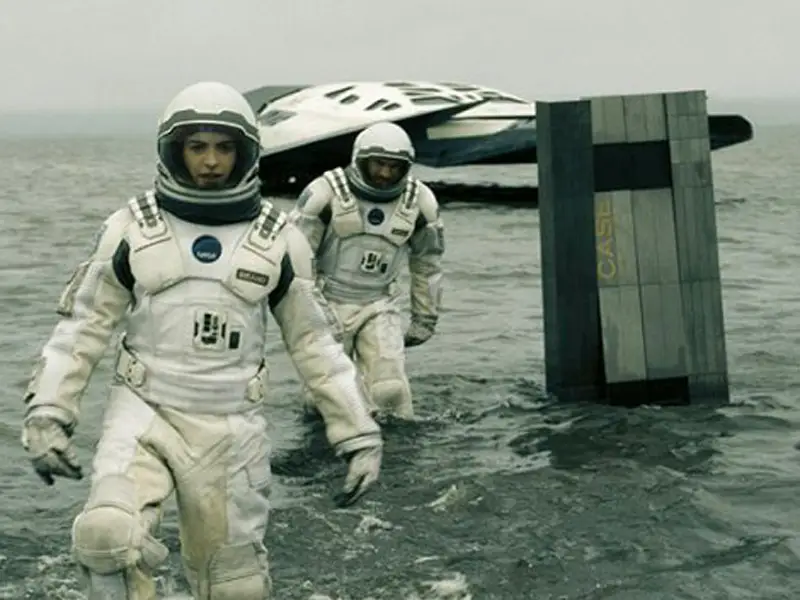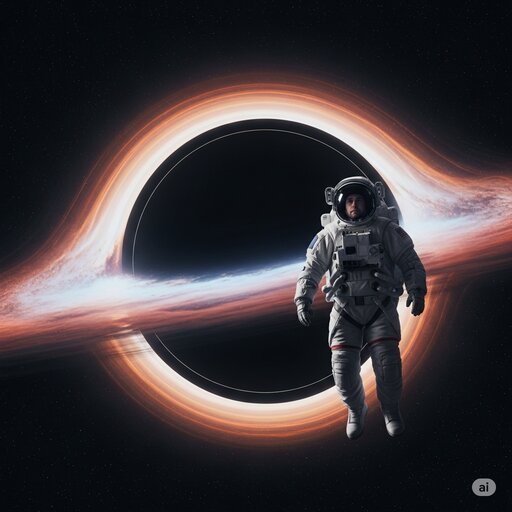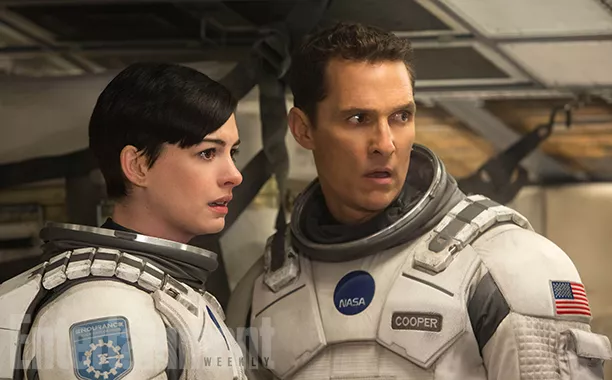The “dramatic time warp” in Interstellar is arguably the film’s most memorable and scientifically intriguing element, serving not just as a plot device, but as a core theme that explores the profound implications of Einstein’s theory of relativity and time dilation.

🕰️ What Is Time Dilation?
compose this text for my blog in short attractive and seo friendly Time dilation is one of the most fascinating and counter-intuitive predictions of Albert Einstein’s theories of relativity. It essentially means that time is not absolute; its passage can be different for different observers, depending on their relative motion or their proximity to massive objects. There are two main types of time dilation, stemming from Einstein’s two theories of relativity:
Time dilation is one of the most fascinating and counter-intuitive predictions of Albert Einstein’s theories of relativity. It essentially means that time is not absolute; its passage can be different for different observers, depending on their relative motion or their proximity to massive objects. There are two main types of time dilation, stemming from Einstein’s two theories of relativity:
1. Special Relativistic Time Dilation (from Special Relativity)

image credit:https://interstem.us/2021/03/12/time-dilation-the-nature-of-space-time
Special Relativity (published by Einstein in 1905) deals with the relationship between space and time for objects moving at constant velocities (i.e., in inertial reference frames) and without considering gravity. It’s built on two fundamental postulates:
- The Principle of Relativity: The laws of physics are the same for all observers in uniform motion (not accelerating).
- The Constancy of the Speed of Light: The speed of light in a vacuum (c) is the same for all observers, regardless of their motion or the motion of the light source.
How it works (Velocity Time Dilation): Because the speed of light is constant for everyone, something strange must happen to time and space when objects move at very high speeds. Imagine a “light clock” where a light pulse bounces between two mirrors.
- For a stationary observer: The light pulse travels straight up and down between the mirrors.
- For an observer moving relative to the clock: The light pulse has to travel a longer, diagonal path to hit the mirrors because the mirrors themselves are moving.
Since the speed of light (c) is the same for both observers, and the moving light pulse has to cover a greater distance, the moving clock must appear to tick slower to the stationary observer. This is time dilation due to relative velocity.
Key Characteristics:
- Due to relative velocity: The faster an object moves relative to an observer, the slower time passes for that object as seen by the observer.
- Symmetrical: If observer A sees observer B’s clock ticking slower, then observer B also sees observer A’s clock ticking slower. This can be counter-intuitive (the “twin paradox” is a classic example that requires careful consideration of acceleration to resolve).
- Applies in the absence of gravity: It describes spacetime in a “flat” or non-gravitational environment.
- Formula: The time dilation factor is given by the Lorentz factor, γ=1−c2v2
1, where v is the relative velocity and c is the speed of light. If Δt0 is the proper time (time measured by a clock at rest relative to the events), then the dilated time Δt=γΔt0.
Examples:
- Muon Decay: Muons are subatomic particles created in the Earth’s upper atmosphere. They have a very short natural lifespan. However, because they travel at speeds very close to c, time dilates for them, extending their observed lifespan significantly, allowing them to reach the Earth’s surface before decaying.
- Astronauts on the ISS: Astronauts on the International Space Station experience a tiny amount of time dilation due to their high orbital velocity. They age slightly slower than people on Earth (though this is often outweighed by gravitational time dilation, as discussed below).
2. General Relativistic Time Dilation (from General Relativity)
General Relativity (published by Einstein in 1915) extends Special Relativity to include gravity. Its core idea is that gravity is not a force, but rather a manifestation of the curvature of spacetime caused by mass and energy. Massive objects warp the fabric of spacetime, and this curvature dictates how objects (including light) move.
How it works (Gravitational Time Dilation): In a curved spacetime, time itself can be affected. The stronger the gravitational field, the more spacetime is warped, and the slower time passes.
- Imagine a massive object like a planet or a black hole.
- Someone very close to this massive object (in a strong gravitational field) will experience time passing more slowly than someone far away from it (in a weaker gravitational field).
This is because gravity affects the “rate” at which time ticks.
Key Characteristics:
- Due to gravity: The stronger the gravitational potential (the closer you are to a massive object), the slower time passes.
- Asymmetrical: Unlike velocity time dilation, gravitational time dilation is absolute. Both observers will agree on whose clock is ticking slower – the one in the stronger gravitational field.
- Includes acceleration: General Relativity handles accelerating reference frames and the effects of gravity, which Special Relativity does not.
- Formula: While more complex, the essence is that time t0 in a strong gravitational field appears to be slower than time tf in a weaker field by a factor related to the gravitational potential.
Examples:
- GPS Satellites: GPS satellites orbit Earth at a high altitude. They experience two opposing time dilation effects:
- Velocity Time Dilation: Their high speed makes their clocks run slower (by about 7 microseconds per day).
- Gravitational Time Dilation: They are in a weaker gravitational field than Earth’s surface, so their clocks run faster (by about 45 microseconds per day). The net effect is that GPS clocks gain about 38 microseconds per day relative to clocks on Earth. Without constant adjustments for both effects, GPS systems would quickly become inaccurate.
- Black Holes: As seen in Interstellar, the time dilation near a supermassive black hole like Gargantua is extreme. The closer you get to the event horizon, the more spacetime is warped, and time slows down dramatically, potentially to the point where it almost stops for an outside observer.
Interplay of Special and General Relativistic Time Dilation
In real-world scenarios (like GPS satellites or even an airplane flight), both types of time dilation can be at play simultaneously. The net effect is the combination of these two phenomena.
In summary, Special Relativity teaches us that motion affects time, while General Relativity shows us that gravity (mass and energy) affects time (and space). Both theories reveal that time is a dynamic component of the universe, not a fixed, universal constant.
The science behind Gargantua in Interstellar is a masterful blend of established astrophysics and speculative, but plausible, extensions, largely guided by theoretical physicist Kip Thorne, who served as the film’s scientific advisor. Gargantua represents a supermassive, rapidly spinning black hole, and its portrayal showcases some of the most extreme and fascinating phenomena predicted by General Relativity.
Let’s break down the key scientific aspects:
Black Holes & Extreme Gravity: The Science Behind Gargantua

1. Supermassive Black Hole
- Massive Scale: Gargantua is depicted as a supermassive black hole, meaning its mass is millions, or even billions, of times that of our Sun. Such objects are found at the centers of most large galaxies, including our own Milky Way (which hosts Sagittarius A*). Their immense mass is crucial for producing the extreme gravitational effects seen in the film.
- Formation: Supermassive black holes are thought to grow by accreting vast amounts of gas and dust from their surroundings, and by merging with other black holes. Their origins are still an active area of research.
2. Rapid Spin (Kerr Black Hole)
- Kerr Black Hole: Unlike a non-rotating (Schwarzschild) black hole, Gargantua is explicitly stated to be a rapidly spinning black hole. This is scientifically significant because the spacetime around a spinning black hole (described by the Kerr metric) is fundamentally different from a non-spinning one.
- Frame-Dragging (Lense-Thirring Effect): One of the most dramatic consequences of a spinning black hole is “frame-dragging” or the “Lense-Thirring effect.” The rotating mass of the black hole literally drags and twists the fabric of spacetime around it. This means that objects (and even light) in the vicinity are forced to rotate with the black hole, regardless of their own motion, to varying degrees depending on their distance.
- Ergosphere: A spinning black hole possesses a region outside its event horizon called the ergosphere. Within the ergosphere, spacetime is dragged so strongly that it’s impossible to remain stationary relative to a distant observer; you must move in the direction of the black hole’s spin. Energy can potentially be extracted from a black hole’s ergosphere (e.g., via the Penrose process), which could power accretion disks or jets.
- Impact on Time Dilation: A rapidly spinning black hole’s gravity well is effectively deeper in its equatorial plane, which can contribute to even more extreme gravitational time dilation for objects orbiting close to that plane, as seen with Miller’s planet. The rotation also affects the size and shape of the event horizon.
3. Extreme Gravitational Time Dilation
- The Core Phenomenon: This is the most dramatic and plot-driving effect of Gargantua. As discussed, the closer you are to a massive object, the slower time passes relative to someone far away. For Miller’s planet, orbiting incredibly close to Gargantua’s event horizon, the gravitational pull is so immense that time dilation reaches a factor of 7 years for every hour.
- Tidal Forces: While not explicitly seen “spaghettifying” the astronauts on Miller’s planet (which would happen very close to stellar-mass black holes), the immense gravitational gradients would still be present. For supermassive black holes, the event horizon is much larger, meaning the tidal forces at the event horizon itself are weaker, allowing a body to cross relatively intact. However, objects like planets orbiting close to such a massive body would still experience extreme tidal stresses that could deform or rip them apart. The massive waves on Miller’s planet are a visual representation of these tidal forces.
4. Accretion Disk
- Glowing Ring: Gargantua is surrounded by a brilliant accretion disk – a swirling disk of gas, dust, and plasma that is gradually spiraling into the black hole. As this material gets closer, friction and intense gravitational forces heat it to extreme temperatures, causing it to emit vast amounts of radiation across the electromagnetic spectrum, making it incredibly luminous.
- Energy Source: Accretion onto black holes is one of the most efficient energy conversion mechanisms in the universe, converting gravitational potential energy into radiation. This is what powers active galactic nuclei (AGN) and quasars.
- Visual Distortion (Gravitational Lensing): The accretion disk’s appearance in Interstellar is scientifically accurate due to gravitational lensing. The black hole’s extreme gravity bends light rays passing nearby. This means we see not just the front of the disk, but also light from the back of the disk that has been bent around the black hole, making it appear warped and twisted, sometimes creating multiple images or rings. The famous visual effects of Gargantua were generated using ray-tracing simulations based on Thorne’s equations.
5. Orbiting Planets (Miller’s Planet)
- Innermost Stable Circular Orbit (ISCO): For a non-spinning black hole, there’s a limit to how close an object can orbit stably without spiraling in – the Innermost Stable Circular Orbit (ISCO). For spinning black holes, the ISCO can be closer to the event horizon, especially if the orbit is in the same direction as the black hole’s spin. This allows for planets like Miller’s to exist much closer than they would to a non-spinning black hole, enabling the extreme time dilation.
- Habitability: While Miller’s planet is depicted as having water, the reality of a planet orbiting so close to a supermassive black hole with an active accretion disk is grim. The planet would be bathed in intense X-rays and other high-energy radiation from the disk, making life as we know it impossible. The film takes some liberties here for narrative purposes.
In essence, Gargantua in Interstellar is not just a cinematic marvel but a detailed and largely accurate representation of the cutting-edge understanding of black hole physics, especially the profound relativistic effects of extreme gravity and rapid spin. The dramatic time warp is a direct, albeit amplified, consequence of these very real phenomena.
Hollywood vs. Physics: Fact or Fiction?

Hollywood films often prioritize dramatic storytelling over strict scientific accuracy, but Interstellar stands out for its concerted effort to ground its science fiction elements in real physics, largely due to the involvement of theoretical physicist Kip Thorne.
Here’s a breakdown of where Interstellar aligns with scientific fact, takes plausible artistic liberties, or ventures into pure fiction:
Fact (or Strongly Based on Scientific Theory):
- Gravitational Time Dilation: This is the most central and scientifically accurate concept in the film. The idea that time passes slower in stronger gravitational fields is a direct consequence of Einstein’s General Theory of Relativity. The extreme ratio on Miller’s Planet (1 hour = 7 years) is theoretically possible if the planet is orbiting incredibly close to a rapidly spinning supermassive black hole. It pushes the boundaries of known physics but doesn’t break them.
- Black Hole Visualization (Gargantua): The visual representation of Gargantua, the supermassive black hole, is considered one of the most scientifically accurate ever depicted in film. The visual effects team worked directly with Kip Thorne, developing new rendering software based on his complex equations to accurately portray the gravitational lensing effects and the warped appearance of the accretion disk around a rotating black hole. This depiction was later remarkably validated by the first actual image of a black hole (M87*) captured by the Event Horizon Telescope.
- Wormholes (Theoretical Concept): While still hypothetical, traversable wormholes are a concept rooted in General Relativity. The film’s depiction of a spherical wormhole, and the gravitational lensing that would occur around it, was designed by Thorne to be scientifically plausible if such a thing could exist and be stable enough to pass through. The “tunnel” effect during transit is an artistic interpretation for cinematic appeal.
- Frame-Dragging (Lense-Thirring Effect): Gargantua is a spinning black hole, which means it drags spacetime around it. This “frame-dragging” effect (or Lense-Thirring effect) is a real prediction of General Relativity and would influence the orbits of objects very close to it, like Miller’s Planet.
- Relativity’s Core Principles: The film fundamentally embraces the idea that space and time are not absolute but are intertwined and can be warped by mass and energy, which is the essence of Einsteinian physics.
- Silent Space: Interstellar largely adheres to the fact that there’s no sound in the vacuum of space. Explosions and space events are depicted silently unless sound would be transmitted through a medium (e.g., inside a spacecraft). This is a stark contrast to many other sci-fi films.
- Artificial Gravity via Rotation: The Endurance spacecraft generates artificial gravity by rotating, a scientifically sound method based on centripetal force.
Artistic License / Plausible but Highly Speculative:
- Habitability of Miller’s Planet: While the time dilation is plausible, a planet orbiting that close to a supermassive black hole with an active accretion disk would be subjected to immense radiation (X-rays, gamma rays) and extreme tidal forces. It’s highly unlikely life as we know it could survive, let alone flourish with liquid water. The massive waves are a visually dramatic way to show tidal forces, but the planet’s continued existence and a breathable atmosphere are stretches.
- Manned Interstellar Travel Logistics: Even with a wormhole, the sheer challenges of long-duration space travel, resource management, and the physiological effects on humans are significantly simplified.
Fiction / Pure Speculation (for Narrative Purposes):
- The Tesseract and Fifth Dimension: Cooper’s journey into the tesseract (a higher-dimensional construct within the black hole) and his ability to interact with specific moments in his daughter’s past using gravity is entirely speculative and transcends current scientific understanding. While theories of extra dimensions exist, the mechanism of using gravity to manipulate time in such a precise way for communication is fictional. This is the film’s biggest leap into the realm of fantasy to deliver its emotional climax.
- “They” (The Future Humans/Beings): The idea that the wormhole and tesseract were placed there by advanced future humans (or “them”) to save humanity is a narrative device that provides a circular causal loop, but it has no basis in current physics.
- Surviving the Black Hole and Entering a Singularity: While supermassive black holes might have weaker tidal forces at their event horizon due to their large size, making it theoretically possible to cross without being immediately “spaghettified,” surviving the journey deeper and then interacting with a structured, traversable region like the tesseract within the singularity is beyond anything predicted by General Relativity. Singularities are generally thought to be points of infinite density where the laws of physics break down.
In summary, Interstellar is a groundbreaking film for its commitment to scientific plausibility in many aspects, particularly its depiction of time dilation and black holes. However, it ultimately uses these accurate foundations as a springboard for a deeply human, and at times fantastical, story that resolves with elements firmly in the realm of science fiction. It’s a testament to how good science can inspire compelling narratives, even if some leaps of faith are required for the ending.
image credit: Paramount Pictures and Warner Bros. Pictures. © 2014 Warner Bros. , and Gemini.

Hi, this is a comment.
To get started with moderating, editing, and deleting comments, please visit the Comments screen in the dashboard.
Commenter avatars come from Gravatar.
[…] A Continuing Legacy […]